Computerized functional treatment of binocular vision disorders, amblyopia and strabismus in particular, has opened
fundamentally new opportunities for increasing the efficiency and decreasing time needed for treatment: improved
correction and training procedures, new stimuli and exercises, previously practically unrealizable, and reduced
physiological and psychological discomfort. Taking into account more than 10-year experience of using the “POISK” (the
computer program developed in IITP RAS for amblyopia treatment) in laboratory and clinical conditions, the authors
discuss the possibilities and features of employing virtual selective occlusion based on polarization separation of left
and right images instead of traditional methods of occlusion. The analysis shows that, in the vast majority of cases,
the traditional methods involving the long-term use of patching (occlusion therapy), which turns one of the eyes off
from work, or regular injection of atropine to defocus retinal images (atropine penalization) can and should be replaced
by more effective and less uncomfortable computer-based methods of virtual selective occlusion.
Key words:
binocular vision disorders, amblyopia, virtual occlusion, polarization 3D technologies
DOI: 10.7868/S3034593625030063
Cite:
Gracheva M. A., Rozhkova G. I., Dergacheva N. N.
Primenenie virtualnoi selektivnoi okklyuzii na baze polyarizatsionnoi 3d-tekhnologii v funktsionalnom lechenii rasstroistv binokulyarnogo zreniya
[Virtual selective occlusion based on polarization 3d technology in functional treatment of binocular vision disorders].
Sensornye sistemy [Sensory systems].
2025.
V. 39(3).
P. 64–76 (in Russian). doi: 10.7868/S3034593625030063
References:
- Alekseenko S.V., Shkorbatova P.YU. Deprivatsionnaya i disbinokulyarnaya ambliopiya: narusheniya v genikulokorkovykh zritel’nykh putyakh [Deprivation and dysbinocular amblyopia: disorders in geniculo-cortical visual pathways]. Al’manakh klinicheskoi meditsiny. 2015. (36). P. 97-100. (in Russian)
- Bolshakov A.S., Gracheva M.A., Rozhkova G.I. Interactive program for increasing visual acuity and speed of visual work in amblyopia – POISK. Certificate of state registration of computer program No. 2013610976. Date of registration in the Register of Computer Programs January 9, 2013.
- Pil’man N.I. Funktsional’noe lechenie kosoglaziya u detei [Functional treatment of strabismus in children]. Kiev: “ZdoroV’YA”, 1964. 225 p. (in Russian)
- Rozhkova G.I. Binokulyarnoe zrenie [Binocular vision]. Fiziologiya zreniya [Physiology of vision]. M.: Nauka, 1992. S. 586-664. (in Russian)
- Rozhkova G. I., Lozinskii I. T., Gracheva M. A., Bol’shakov A. S., Vorob’ev A. V., Sen’ko I. V., Belokopytov A. V. Funktsional’naya korrektsiya narushennogo binokulyarnogo zreniya: preimushchestva ispol’zovaniya novykh komp’yuternykh tekhnologii [Functional correction of disturbed binocular vision: advantages of using new computer technologies]. Sensornye sistemy [Sensory Systems]. 2015. T. 29(2). S. 99–121. (in Russian)
- Rozhkova G.I., Nikolaev P.P., Dimentman A.M. Binokulyarnaya bor’ba pri monokulyarnom nablyudenii odnorodnogo polya i stabilizirovannykh izobrazhenii. [Binocular struggle during monocular observation of homogeneous field and stabilized images]. Fiziologiya cheloveka [Human Physiology]. 1985. V. 11(3). P.360-367. (in Russian)
- Rozhkova G.I., Ploskonos G.A. Mnozhestvennost’ mekhanizmov binokulyarnogo sinteza i ikh izbiratel’nye narusheniya pri kosoglazii [Multiple mechanisms of binocular synthesis and their selective disorders in strabismus.]. Sensornye sistemy. 1988. V. 2. (2). P. 167-176. (in Russian)
- Rozhkova G.I., Podugol’nikova T.A., Gracheva M.A., Vasilyeva N.N., Belokopytov A.V., Kononova N.E., Khatsenko I.E. Analiz razvitiya komp’yuternykh metodov binokulyarnogo lecheniya kosoglaziya i ambliopii [Development of computer methods in binocular treatment of strabismus and ambliopia]. Sensornye sistemy. 2025. V. 39 (2). P. 3-44. (in Russian)
- Sergievskii L.I. Sodruzhestvennoe kosoglazie i geteroforii. (Profilaktika, diagnostika, lechenie bez operatsii) [Sodruzhnoe strabismus and heterophoria. (Prevention, diagnosis, treatment without surgery)]. M.: Medgiz, 1951. 243 p. (in Russian).
- State clinical recommendations. Diagnostika i lechenie sodruzhestvennogo kosoglaziya [Diagnosis and treatment of concomitant strabismus]. Rossiiskaya Pediatricheskaya Oftal’mologiya [Russian Pediatric Ophthalmology]. 2015. (2). P. 56-63. (in Russian).
- Kh’yubel D. Glaz, mozg, zrenie [Eye, Brain, Vision]. Per. s angl. M.: Mir, 1990. 239 p. (in Russian)
- Chernyshova S.G., Samedova D.Kh. Struktura i prichiny neudovletvoritel’nykh rezul’tatov khirurgicheskogo lecheniya sodruzhestvennogo kosoglaziya [Structure and causes of unsatisfactory results of surgical treatment of concomitant strabismus]. Oftal’mologiya. 2012. V. 3 (10). P.158-164. (in Russian)
- Gifford S.R. Some notes on the treatment of strabismus. Br J Ophthalmol. 1935. V. 19. P. 148-151.
- Herbison N., Cobb S., Gregson R., Ash I., Eastgate R., Purdy J., Hepburn T., MacKeith D., Foss A. Interactive binocular treatment (I-BiT) for amblyopia: results of a pilot study of 3D shutter glasses system. Eye (London, England). 2013. V. 27(9). P. 1077–1083.
- Kulp M.T., Cotter S.A., Connor A.J., Clarke M.P. Should amblyopia be treated? Ophthalmic Physiol Opt. 2014. V. 34(2). P. 226. https://doi.org/10.1111/opo.12124
- Levi D. Visual processing in amblyopia: Human studies. Strabismus. 2006. V. 14(1). P. 11–19. https://doi. org/10.1080/09273970500536243
- Levi D.M., Li R.W. Perceptual learning as a potential treatment of amblyopia: a mini-review. Vision Res. 2009; V. 49(21). P. 2535-2549. https://doi.org/10.1016/j. visres.2009.02.010
- Levi D.M., Knill D.C., Bavelier D. Stereopsis and amblyopia: A mini-review. Vision Research. 2015. V. 114(January). P. 17–30. https://doi.org/10.1016/j.visres.2015.01.002
- Li J., Thompson B., Deng D., Chan L.Y., Yu M., Hess R.F. Dichoptic training enables the adult amblyopic brain to learn. Current Biology. 2013. V. 23(8). P. R308– R309.
- Loudon S.E, Simonsz H.J. The history of the treatment of amblyopia. Strabismus. 2005. V. 13. P. 93-106. https://doi.org/10.1080/09273970590949818
- Newsham D. Parental non-concordance with occlusion therapy. Br. J. Ophthalmol. 2000. V. 84(9). P. 957-962.
- Pineles S.L., Aakalu V.K., Hutchinson A.K., Galvin J.A., Heidary G., Binenbaum G., VanderVeen D.K., Lambert S.R. Binocular treatment of amblyopia: a report by the American Academy of Ophthalmology. Ophthalmology. 2020. V. 127(2). P. 261-272. https://doi.org/10.1016/j. ophtha.2019.08.024
- Qiu F., Wang L., Liu Y., Yu L. Interactive binocular amblyopia treatment system with full-field vision based on virtual reality // IEEE. 2007. 1257–1260.
- Tailor V., Bossi M., Greenwood J.A., Dahlmann-Noor A. Childhood amblyopia: current managemtnt and new trends. British Medical Bulletin. 2016. V. 119. P. 75-86. https://doi.org/10.1093/bmb/ldw030.
- Wolfe J.M., Owens D.A. Evidence for separable binocular processes differentially affected by artificial anisometropia. Amer. J. Optometry and Physiol. Opt. 1979. V. 56. P. 279-284.
- Wolfe J.M., Held R. Binocular adaptation that cannot be measured monocularly. Perception. 1982. V. 11. P. 289-295.
- Wolfe J.M. Stereopsis and binocular rivalry. Psychol. Rev. 1986. V. 93(3). P. 262-282.
